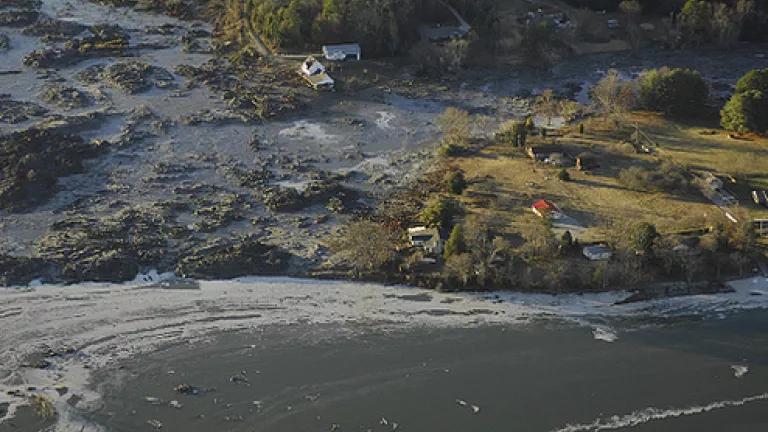
Ever since the Kingston coal ash catastrophe in Tennessee in December 2008, we've been waiting for the U.S. Environmental Protection Agency to fulfill its promise to take action to deal with the ticking time bombs of hundreds of unlined landfills and storage ponds filled with billions of gallons of this toxic waste. After some false starts and missed deadlines, yesterday EPA finally proposed regulatory options for coal ash waste, a byproduct of burning coal at power plants to generate electricity.
These are the first ever federal regulations for coal ash disposal in ponds and landfills. That's certainly progress. However, the agency's proposal is a bit of a mixed bag -- EPA put forward two options for regulating coal ash waste from power plants under the federal Resource Conservation and Recovery Act (RCRA).
- Option 1: Designate coal ash as a "special waste" under RCRA Subtitle C and provide federally enforceable safeguards to protect the public from toxic coal ash.
- Option 2: Designate coal ash under RCRA Subtitle D and dispose of this toxic pollution as if it were not hazardous, with standards not enforceable by the federal government -- that's less stringent than household garbage.
Polluters will claim EPA’s plan to designate coal ash as hazardous waste will come with a cost to industry as they conveniently ignore the costs to public health of dumping unregulated coal ash into ponds and landfills. Coal ash is filled with arsenic, lead, cadmium, mercury, selenium, and many other dangerous pollutants that can cause cancer and damage the nervous system and other organs, especially in children.
For years, power and coal companies have been dumping poisonous coal ash into unlined landfills and unsafe ponds. Last August, EPA rated 49 coal ash sites across the country as ‘high hazard’ sites, meaning a failure will probably cause loss of human life. The problems surrounding coal ash ponds and landfills are staggering and continue to compound as the agency begins to scrutinize many of these forgotten sites. In February, environmental groups identified 31 additional coal ash contamination sites in 14 states.
“We are disappointed that the rule brings forward two dramatically different regulatory options,” says NRDC Legislative Director Scott Slesinger. “We expect EPA to choose the option that adequately protects the public, particularly our precious groundwater, and treats this hazardous waste as a hazardous waste.”
There will be a 90-day public comment period during which NRDC and our environmental allies will urge EPA to adopt the most protective safeguards. So stay tuned!
(Coal ash pond at TVA's Kingston power plant in Tennessee ruptured in December 2008, spilling over one billion gallons of toxic sludge into the Emory River and surrounding community. Cleanup costs will exceed $1 billion.)
